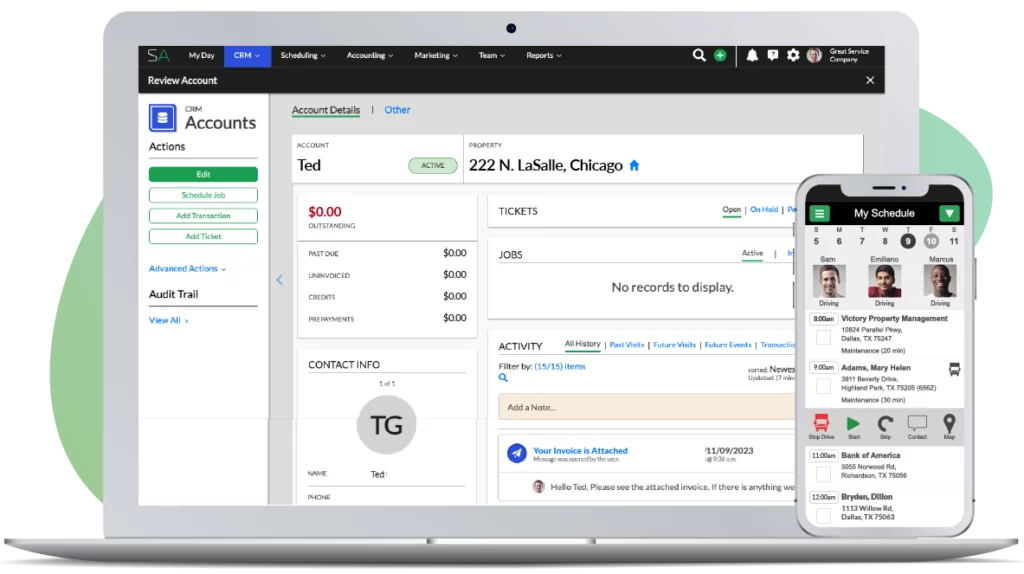Review of the Turfmaster 30 Inch Toro Commercial Mower. Is it better than the 21 Inch Toro Proline?
Video Transcript
I have received many questions asking if we have switched from 21 inch mowers (Toro Proline) to the new 30 inch Commercial Toro Mower.
I’m generally not the best guy to give you details on the specs and the mechanics of a piece of equipment. I think about it more from a business standpoint so I’m going to give you that perspective and the perspective of our team (who actually has to use the equipment and put it into play).
Our thought process: 1) this is a really interesting piece of equipment, it’s an interesting size. We are in the business, all of us are in the business, of selling time, so the more we can produce, the more money we can make. Nine additional inches of cutting width is a big deal. I think it’s roughly 40% wider – so that’s a pretty big deal.
One thing you should know about the business that we are in is that we have every type of property in our market, large residential, multi-acre residential. We have half acre stuff, lots of small stuff. Small stuff to me means under 16,000 gross lot square feet. We have every kind of commercial you can imagine, you name it, we have it in our market.
We as a company focus crews on specific types of properties. For us, on a typical small residential crew where we might run three 21 inch mowers, this mower creates a few issues. One of those issues is that it now messes up our custom designed truck beds… if you use a box this probably won’t be an issue but in our case, we have designed our truck beds specifically to fit the equipment that we carry and our equipment rolls into place.
This wider mower creates a bit of a configuration issue and would require that we retool our beds. That’s one consideration but that doesn’t mean it’s not justifiable. If production then goes up then it totally justifiable. That’s a thing to think about in your business is moving to this bigger piece of equipment, what operational issues, logistical issues might that create in terms of configuration.
The reason why I think that’s important is what we don’t like is running a lot of different pieces of equipment. We think it’s really important to run similar brands, similar equipment. That way, if you’re running nine different varieties of equipment, multiple brands, the problem you run into is you need to train on each of the models. You need to train on each of the brands.
If you need parts, you now have a different issue then if you have, for example, if you run Stihl for line trimmers or weed eaters and you have 20 of those and one breaks down, it’s easy to get a part. If you have Stihl and Redmax and you have Echo and everything else, now it gets a little bit harder to swipe parts in a bind. It’s nice to run one brand and have a lot of that brand. It gives you paying power and then it also gives you the ability to train your team.
There’s a million operational advantages by simplicity. One of the considerations here is that if we’re going to retool and we’re going to move our smaller residential crews to the 30 inch piece of equipment, what does that mean? Does that mean we completely eliminate the 21s? Does it mean we run one 30 and two 21s on every truck? What does that look like?
Also when we’re doing commercial work, the 30 inch is nice but we could just as easily run full fledged walk behinds that are bigger and bigger riders. Our strategy is always to put the biggest piece of equipment that we can on a property. In the commercial space, it generally makes more sense to go bigger and the only time that we are pulling out mowers is when we’re doing the small tight areas and so I’m referring again to the 21 inch mowers.
The 21 inch mowers still fits nicely into a commercial crew. Yeah, 30’s great but the 21 is still a nice quick little light piece of equipment and light is something to consider. There’s a weight difference between these two pieces of equipment, 21s mulch very good. They’re a single blade. I can’t say that the dual blade of the 30 doesn’t mulch as well, I just … The 21 works, it’s super light.
Again, because we’re selling time, in this scenario where we have rain or bad weather, we don’t have an issue, generally with the 21s rotting the ground or causing problems. There’s a weight concern here, though not drastic, there’s absolutely still a weight concern. That’s something to consider, so consider how are your trucks tooled and your beds and trailers tooled.
Consider that how are you going to implement this piece of equipment, are you going to replace all of your 21s with the 30s because I think it’s a negative to have a little bit of different types of or pieces of equipment. Then consider the weight, consider also usage. As an example, if this piece of equipment that is absolutely more expensive than a 21 is now only going to be used 50% of the time, where you could have normally had 100% utilization or you using the 21 inch mowers all the time.
For whatever reason, logistically based on the types of properties that take care of, it doesn’t make sense to run this piece of equipment all day, every day, none stop then you are not fully utilizing your asset. Your piece of equipment is sitting on the truck, that’s a consideration. I want the equipment to be running a lot, it doesn’t pay to have equipment just sitting on the truck, generally, it’s a waste of money.
If we’re not going to fully utilize it then it wouldn’t make sense making the change. That’s a consideration that only you can answer, knowing the different types of properties that you care for, whether they’re commercial or residential and then also given the size of those properties.
It is more expensive, that’s a factor but to me the expenses is pretty much a non-issue. If you can increase production because again, you’re selling time and you can sell more time and get jobs done faster then who cares if it’s a little bit more money, that’s really a non-issue. As long as you can make enough extra money, perform enough extra work to bring down the amount of payroll that you’re having to spend or keep the payroll where it is but yet bring in more money.
Training may go in with that. Training is a big one. You want to make sure that you can train your team on this. What we found is everybody is generally familiar with the 21 inch so just provide some advantages to continue with the 21 inch more because everyone is trained and then also there’s plentiful parts supplies. No problem getting parts for the 21s, not saying there are problems with the 30 mower but we’ve got a million different parts at our shop that we can swipe from.
Those are some things that I’d consider in making the switch. I’m not saying don’t, I’m not saying it’s bad. It’s a great piece of equipment. I actually think they’re going to probably work it out, that’s my opinion. I think they’ll work it out, I think this will be a piece of equipment for the future and it’s actually a good piece now.
I think it’s only going to get better, it’s going to get lighter and for a lot of reasons I do think this is the future. If you are on the borderline between this or being able to jump up into a bigger piece of equipment, especially if you’re doing large residential or commercial, I think you might as well jump to the bigger pieces of equipment and then keep a few of the 21s around for the tight mowing and go up to the biggest piece of equipment you can.
I wouldn’t stay at this 30 inch size because of cost, because it’s a little bit cheaper than bumping up to a 48 or whatever the next size up is or even a 36, that’s a consideration. A 36 inch true walk behind is more expensive but does it make sense to just go a little bit larger. Where does 30 fit in when you’re thinking about this and are you not only going up to this 30 inch piece of equipment and not bigger just because you want to save 1,000 bucks.
A thousand bucks is easily offset based on payroll saved and so don’t make my opinion the decision based on price, make the decision based on the very best piece of equipment based on size for the majority of the types of properties that you take care of and take into consideration the training that will go into this to make sure your crews and your people are doing the very best work.
That’s my two cents, I hope that’s helpful.




One Reply to “Turfmaster 30 Inch Toro Commercial Mower vs 21 Inch Proline”
We are currently running 5 of the noncommercial toro 30 inch mowers. We have tried the exmark version but found them too heavy and did not like the drive system engagement. The oldest of the toros is a 2013 and has easily in excess of 3000 lawns under it. So far we have only replaced belts and depth gage plates. I will always have a good 21 inch on board but the backbone of walkers is and will remain the 30 inch. They mulch great, fit through any gate and are light enough to pick up if you have to.